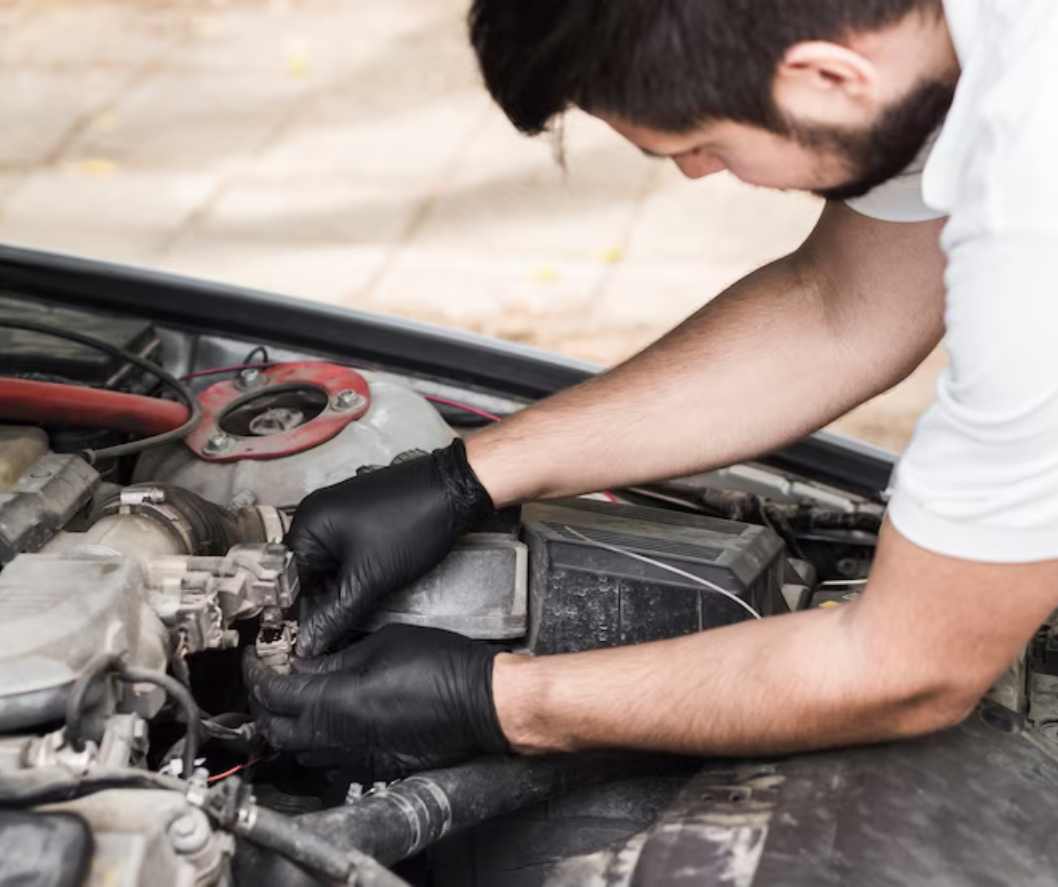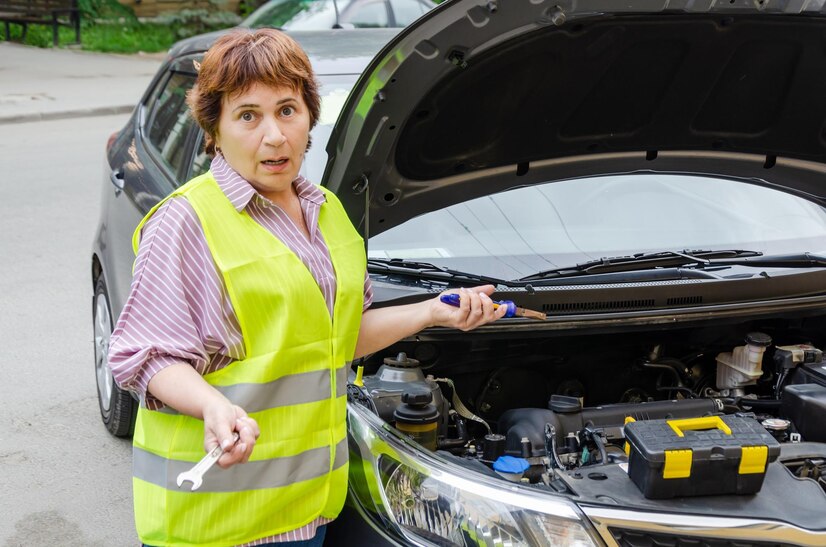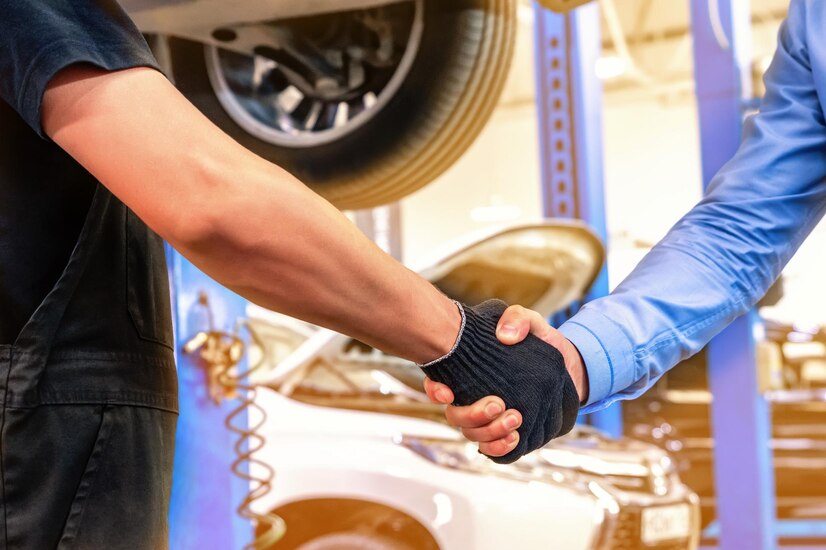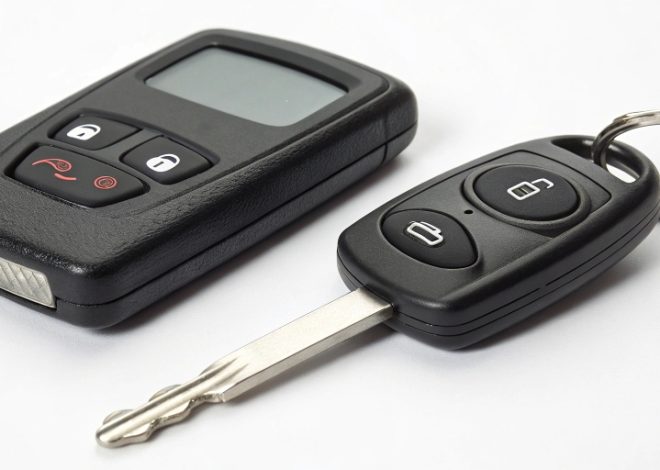
Vehicle Repair Tips: Navigating Common Challenges with Confidence
In today’s fast-paced world, having a reliable vehicle is crucial for our daily routines. Whether it’s commuting to work, running errands, or embarking on road trips, our vehicles play an integral role in our lives. However, with the convenience of modern transportation comes the responsibility of vehicle maintenance and repair. In this article, we will explore the essential aspects of vehicle repair tips and maintenance, giving you the confidence to navigate common challenges effectively.
Importance of Vehicle Maintenance and Repair
Imagine you’re cruising down the highway when suddenly, a dashboard warning light illuminates. What do you do? Vehicle maintenance and repair are not just about keeping your car in top shape; they’re about ensuring your safety and peace of mind on the road. Neglecting maintenance can lead to costly breakdowns, accidents, and unnecessary stress. By staying proactive and informed, you can prevent potential issues and extend the life of your vehicle.
Building Confidence in Handling Vehicle Issues
The world of cars might seem intimidating, especially if you’re not familiar with the inner workings of your vehicle. However, gaining confidence in handling vehicle issues is entirely possible. It’s like learning to ride a bicycle; once you understand the basics, you’ll find it much easier to navigate the complexities. Let’s start by breaking down the key components of your vehicle and understanding their functions.
Understanding Your Vehicle
Getting Acquainted with Your Vehicle’s Manual
Your vehicle’s manual is like a roadmap to its functions and features. It’s an often-overlooked resource that can provide valuable insights into your vehicle’s maintenance requirements, recommended service intervals, and troubleshooting tips. Take the time to peruse this manual and familiarize yourself with its contents—it will be your trusted companion on your journey to becoming a confident car owner.
Identifying Essential Vehicle Components
Before diving into the intricacies of vehicle maintenance, let’s identify some essential components that play a significant role in your car’s performance:
- Engine: The heart of your vehicle, responsible for generating power and propelling the car forward.
- Transmission: Facilitates the transfer of power from the engine to the wheels.
- Brake System: Allows you to slow down and stop the vehicle safely.
- Suspension and Steering: Ensures a smooth ride and responsive handling.
- Exhaust System: Directs exhaust gases away from the engine and reduces noise.
Basic Maintenance Practices
Now that you have a better understanding of your vehicle, let’s explore some basic maintenance practices that every car owner should be familiar with.
Regular Oil Changes: Extending Engine Life
Oil is the lifeblood of your engine, lubricating its moving parts and preventing friction-related damage. Regular oil changes are essential for maintaining engine performance and longevity. Refer to your vehicle’s manual to determine the recommended oil change intervals and oil viscosity for your specific model.
Monitoring Fluid Levels: Brake, Transmission, Coolant, and More
Fluids are vital to various systems within your vehicle. Regularly check the levels of brake fluid, transmission fluid, coolant, and power steering fluid. Low fluid levels can lead to decreased performance and potential damage. If you notice any leaks or significant drops in fluid levels, address them promptly.
Keeping Your Tires in Top Condition: Pressure, Tread, and Rotation
Your tires are the only point of contact between your vehicle and the road. Proper tire maintenance is crucial for optimal handling, fuel efficiency, and safety. Regularly check tire pressure, tread depth, and ensure timely rotations to promote even tire wear.
The Role of Filters: Air, Oil, and Fuel
Filters play a crucial role in maintaining the cleanliness of various systems in your vehicle. Air filters ensure clean air intake, oil filters keep the engine oil free of contaminants, and fuel filters prevent debris from reaching the fuel system. Regularly inspect and replace filters as needed to prevent performance issues.
Diagnosing Common Vehicle Issues
Despite your best efforts in maintenance, vehicles can encounter issues over time. Learning to diagnose common problems can save you time, money, and stress.
Decoding Dashboard Warning Lights
Modern vehicles are equipped with a variety of dashboard warning lights that indicate potential issues. These lights range from the check engine light to tire pressure warnings. When a warning light illuminates, consult your vehicle’s manual to understand its meaning and take appropriate action.
Strange Noises: What Your Vehicle Is Telling You
Unusual noises, such as grinding, squeaking, or knocking, can be indicators of underlying problems. For example, a high-pitched squeal during braking might suggest worn brake pads. Addressing these noises promptly can prevent further damage and ensure your safety.
Addressing Performance Problems: Acceleration, Braking, Handling
If you notice changes in your vehicle’s acceleration, braking, or handling, it’s essential to investigate the root cause. Poor acceleration could be due to a clogged air filter or fuel system issues. Similarly, handling problems might be attributed to suspension or alignment issues.
DIY Fixes and Safety Measures
While some issues require professional attention, there are several DIY fixes and safety measures you can undertake.
Changing a Flat Tire: Step-by-Step Guide
A flat tire can happen unexpectedly, but changing it doesn’t have to be a daunting task. Follow these steps to change a flat tire safely:
- Find a safe location to pull over.
- Gather necessary tools: jack, lug wrench, spare tire.
- Loosen lug nuts before lifting the vehicle.
- Use the jack to lift the vehicle off the ground.
- Remove the lug nuts and old tire.
- Install the spare tire and hand-tighten lug nuts.
- Lower the vehicle, and fully tighten lug nuts in a crisscross pattern.
Jumpstarting Your Battery: Safety Precautions and Procedure
A dead battery can leave you stranded, but jumpstarting your vehicle can get you back on the road. Follow these steps:
- Position the donor vehicle close to yours.
- Attach the red (positive) jumper cable to the positive terminal of the dead battery.
- Attach the other red jumper cable end to the donor vehicle’s positive terminal.
- Connect the black (negative) jumper cable to the donor vehicle’s negative terminal.
- Attach the other black jumper cable end to an unpainted metal surface on your vehicle.
- Start the donor vehicle and let it idle for a few minutes.
- Attempt to start your vehicle. If successful, let it run to recharge the battery.
Replacing Worn-Out Windshield Wipers for Optimal Visibility
Clear visibility is essential for safe driving. If your windshield wipers leave streaks or make noise, it’s time for a replacement. Follow these steps:
- Lift the wiper arm away from the windshield.
- Locate the release tab on the wiper blade.
- Depress the tab and slide the blade off the arm.
- Attach the new wiper blade by sliding it onto the arm until it clicks into place.
Tools Every Car Owner Should Have
Equipping yourself with the right tools can empower you to handle minor issues and emergencies effectively.
Building Your Basic Car Tool Kit: Essentials and Their Uses
- Jack and Lug Wrench: For changing tires.
- Jumper Cables: To jumpstart a dead battery.
- Basic Tool Set: Including pliers, wrenches, and screwdrivers.
- Tire Pressure Gauge: To monitor tire pressure.
- Flashlight: For visibility during nighttime emergencies.
Emergency Tools: Flares, Reflective Triangles, First Aid Kit
In case of roadside breakdowns or accidents, these tools can enhance your safety:
- Emergency Flares: To alert other drivers of your presence.
- Reflective Triangles: Increases visibility to prevent accidents.
- First Aid Kit: Provides essential medical supplies.
Navigating Electrical Issues
Electrical problems can be challenging to diagnose, but understanding some common issues can help you take appropriate action.
Troubleshooting Battery Problems: Dead Battery vs. Alternator Issues
If your vehicle fails to start, it could be due to a dead battery or alternator issues. Use a multimeter to test the battery voltage. If it’s below 12.4 volts, the battery may need charging or replacement. If the battery voltage is sufficient, the alternator might be the culprit.
Dealing with Faulty Lights: Headlights, Taillights, and Indicators
Dim or flickering lights can compromise your visibility on the road. Ensure your headlights, taillights, and indicators are functioning correctly. If bulbs are the issue, replacing them is a straightforward DIY task.
Dealing with Overheating
An overheating engine can lead to severe damage if not addressed promptly.
Understanding Engine Temperature Gauges
Your vehicle’s temperature gauge indicates the engine’s operating temperature. If the needle moves into the red zone, pull over and let the engine cool down.
Steps to Take When Your Engine Overheats
- Turn off the air conditioning and turn on the heater to dissipate heat.
- Pull over to a safe location and turn off the engine.
- Wait for the engine to cool down before opening the hood.
- Check coolant levels and add coolant if needed.
Brake System Concerns
Your vehicle’s brake system is critical for safety. Recognizing signs of brake issues is crucial for preventing accidents.
Recognizing Brake Warning Signs: Squeaking, Grinding, Soft Pedal
Squeaking or grinding noises while braking can indicate worn brake pads or damaged rotors. A soft brake pedal might suggest air in the brake lines or a brake fluid leak.
Brake Fluid Check and Replacement
Brake fluid is essential for proper brake system function. Over time, brake fluid can become contaminated or degrade. Regularly check brake fluid levels and consider replacing it as recommended by your vehicle’s manual.
Transmission and Gearbox
Your vehicle’s transmission plays a significant role in power delivery and shifting gears smoothly.
Automatic vs. Manual Transmissions: Pros and Cons
Automatic transmissions offer ease of use, while manual transmissions provide more control. Consider your driving preferences when choosing between the two.
Spotting Transmission Issues: Slipping, Delayed Shifting, Leaking Fluid
Signs of transmission issues include slipping gears, delayed shifting, and leaks. Address these problems promptly to avoid further damage.
Suspension and Steering Problems
A comfortable and stable ride is dependent on a well-maintained suspension and steering system.
Uneven Tire Wear: Alignments and Suspension Check
Uneven tire wear can indicate misaligned wheels or suspension problems. A professional alignment and suspension check can remedy these issues.
Diagnosing Power Steering Problems
Difficulty in steering or squealing noises can signal power steering issues. Inspect power steering fluid levels and address leaks promptly.
Fluid Leaks: Causes and Solutions
Fluid leaks can be concerning, but identifying the type of leak can help pinpoint the issue.
Identifying Different Fluid Leaks: Oil, Coolant, Transmission Fluid
- Oil Leak: Dark brown or black puddles under your vehicle might indicate an oil leak.
- Coolant Leak: A sweet-smelling liquid often green or orange in color.
- Transmission Fluid Leak: Red or reddish-brown fluid with a slightly sweet smell.
Taking Action to Prevent Further Damage
If you identify a fluid leak, it’s essential to address it promptly. Ignoring leaks can lead to severe damage to various vehicle systems.
Exhaust System Maintenance
The exhaust system plays a role in reducing noise and redirecting harmful gases away from the engine and passengers.
Recognizing Exhaust System Issues: Noises, Odors, Reduced Efficiency
Loud noises, unusual odors, and reduced fuel efficiency can be signs of exhaust system problems.
Dealing with Exhaust Leaks and Catalytic Converter Problems
Exhaust leaks and catalytic converter issues can affect performance and emissions. Have these problems addressed by a professional mechanic.
Advanced Troubleshooting
Modern vehicles come equipped with onboard diagnostics systems that can provide valuable insights into issues.
Using OBD-II Scanners: Reading and Interpreting Diagnostic Trouble Codes
OBD-II scanners plug into your vehicle’s diagnostic port and provide error codes. These codes can help you pinpoint specific issues, providing valuable information for repairs.
Seeking Professional Help: When to Visit a Mechanic
While DIY fixes are excellent for minor issues, some problems require the expertise of a professional mechanic. If you’re unsure about the cause of a problem or lack the necessary tools, it’s best to seek professional assistance.
Choosing the Right Mechanic
Selecting the right mechanic is crucial for receiving quality service and fair pricing.
Researching Local Mechanics and Repair Shops
Research local mechanics and repair shops to find those with positive reviews and reputable service.
Questions to Ask: Qualifications, Experience, and Rates
When contacting mechanics, ask about their qualifications, years of experience, and pricing structure. Establishing clear communication can help you make an informed decision.
Preventing Future Problems
While addressing current issues is essential, preventing future problems is equally vital.
Regular Maintenance Schedule: What to Check and When
Refer to your vehicle’s manual for a recommended maintenance schedule. Regularly inspect and service essential components such as brakes, tires, and fluids.
How Driving Habits Affect Vehicle Longevity
Your driving habits have a significant impact on your vehicle’s longevity. Smooth acceleration, gentle braking, and avoiding aggressive maneuvers can extend the life of your car.
Staying Safe on the Road
Safety should always be a priority when driving. Adopt defensive driving practices to avoid accidents and hazards.
Importance of Defensive Driving: Avoiding Accidents and Hazards
Maintain a safe following distance, anticipate the actions of other drivers, and stay alert at all times. Defensive driving can help you avoid accidents and ensure your safety on the road.
Emergency Preparedness: What to Do in Case of Breakdowns
Despite your best efforts, breakdowns can occur. Be prepared by having emergency essentials such as a first aid kit, water, snacks, and a fully charged phone.
Wrapping Up
Becoming a confident car owner is a journey that starts with understanding the basics of vehicle maintenance and repair. By learning about your vehicle’s components, practicing regular maintenance, and addressing issues promptly, you can confidently navigate common challenges.
Remember, you don’t need to be a professional mechanic to take care of your vehicle. Armed with knowledge and a willingness to learn, you can empower yourself to handle various challenges and keep your vehicle running smoothly. Regular maintenance, proactive troubleshooting, and safe driving practices will contribute to your car’s longevity and your peace of mind on the road.






